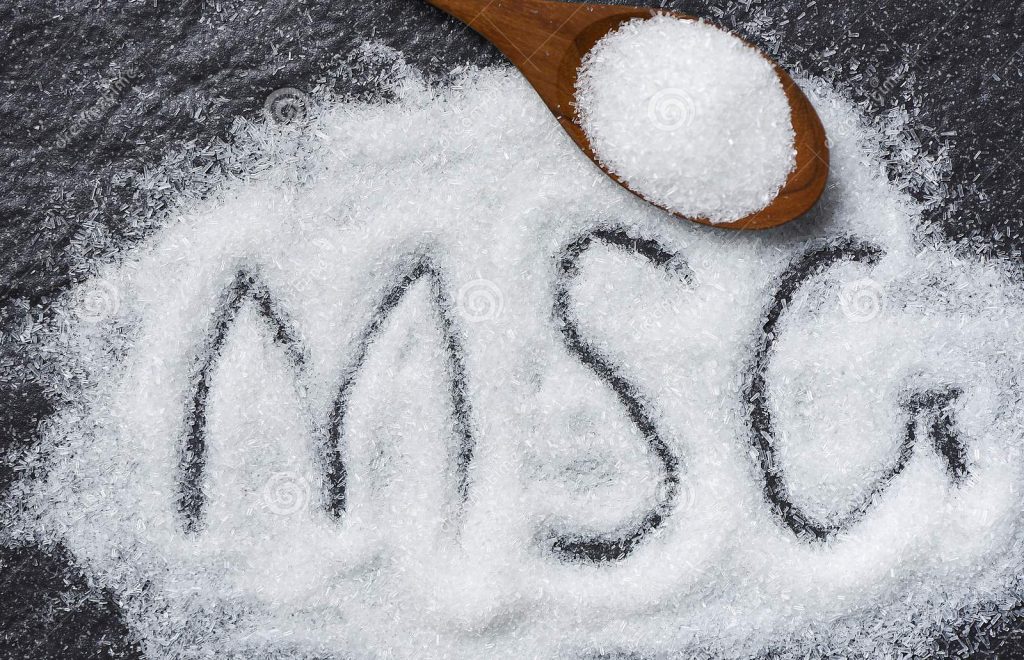

Monosodium glutamate or MSG is everywhere, and it’s even more prevalent than you might think. If you buy some chips at your local newsagent’s or supermarket and read the ingredients, you will probably find this substance. This additive is responsible for our trips to the pantry to snack on potatoes, or for our impulses to buy more and more bags of snacks. That is why today on the mentta blog we are going to tell you what monosodium glutamate is and what its main characteristics are.
Monosodium glutamate is a substance used by many companies whose main purpose is to act as a flavour enhancer. It is the sodium salt of glutamic acid (a very common non-essential acid) and is obtained from fermentation processes. It is usually added to foods to enhance their flavour, and in our body it acts as a neurotransmitter. What are neurotransmitters? They are molecules that are synthesised in neurons and modify the activity of the nervous system. In other words, a neurotransmitter is a biomolecule that enables the transmission of information from one neuron to another.
The origin of this additive dates back to 1908, thanks to the discovery of the Japanese professor Kikhunae Ikeda. He extracted the substance from a seaweed broth, an element that gave the broth a great taste. The following year, glutamate was already on the market. It is true that there has been some debate about the health benefits of this additive.


When Japanese professor Kikhunae Ikeda discovered glutamate, it quickly began to be marketed. Since then, the additive has been constantly under investigation for toxicity. Why? Well, it all starts when a man decides to try a Chinese-American dish. After ingestion, he develops symptoms that fit into what would later be called “Chinese restaurant syndrome“. The ingredients that could have caused this could be the alcohol in the wine, the sodium or the glutamate, but the experts quickly focused on the latter.
And so it was, they recorded a series of symptoms that could appear in a small section of the population because of glutamate. These are a set of symptoms that encompass the Chinese restaurant syndrome: Flushing, headache, sweating and hot flushes, burning in the mouth, facial pressure and swelling, tingling in the face, muscle aches and pains, vomiting and nausea.
While glutamate is therefore not considered a dangerous ingredient, it is true that it can affect a small part of the population in a bad way. Moreover, like everything else in life, excessive consumption of glutamate can be harmful. However, many expert bodies have confirmed that it does not pose a health risk.
The food industry is adding more and more glutamate. One of the main reasons for this is to make the food taste better, as well as to create an “addictive sensation”. This additive does not cause addiction as such, but it does cause low satiety and an increased desire to eat. In fact, it is difficult not to find an article on the web that speaks highly of this substance. It is true that it is not classified as a dangerous ingredient, but it is important to know the risks of glutamate consumption:
A commitment to healthy eating in mentta
Staying full on healthy food is more complicated, especially without enough information. If you want to eat healthily and get enough to keep you satiated so that you don’t snack all afternoon, don’t miss our posts, especially the ones about satiating foods. Take note!
For centuries, coffee has accompanied humanity, becoming a symbol of gathering, energy, and tradition. Its… Read More
When talking about certain foods, some terms can be easily confused. A good example of… Read More
Spanish cuisine is renowned worldwide for its diversity of flavors, textures, and aromas. Many of… Read More
Peppers, those colorful jewels that adorn our kitchen, are not just a simple side dish… Read More
Do you know the differences between sweet potato and yam? When we talk about sweet… Read More
The various types of tubers have been a fundamental part of the human diet since… Read More